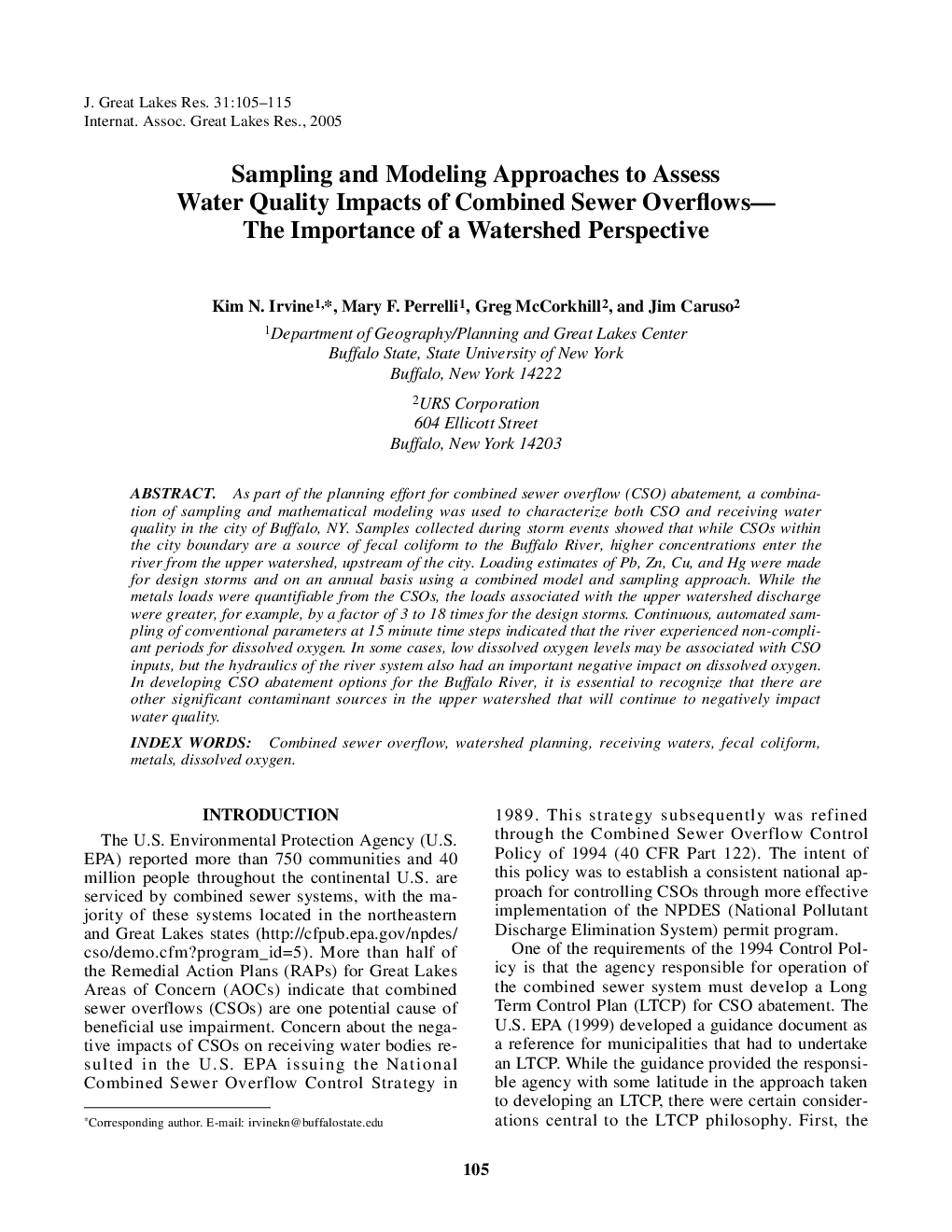| Article ID | Journal | Published Year | Pages | File Type |
|---|---|---|---|---|
| 9450212 | Journal of Great Lakes Research | 2005 | 11 Pages |
Abstract
As part of the planning effort for combined sewer overflow (CSO) abatement, a combination of sampling and mathematical modeling was used to characterize both CSO and receiving water quality in the city of Buffalo, NY. Samples collected during storm events showed that while CSOs within the city boundary are a source of fecal coliform to the Buffalo River, higher concentrations enter the river from the upper watershed, upstream of the city. Loading estimates of Pb, Zn, Cu, and Hg were made for design storms and on an annual basis using a combined model and sampling approach. While the metals loads were quantifiable from the CSOs, the loads associated with the upper watershed discharge were greater, for example, by a factor of 3 to 18 times for the design storms. Continuous, automated sampling of conventional parameters at 15 minute time steps indicated that the river experienced non-compliant periods for dissolved oxygen. In some cases, low dissolved oxygen levels may be associated with CSO inputs, but the hydraulics of the river system also had an important negative impact on dissolved oxygen. In developing CSO abatement options for the Buffalo River, it is essential to recognize that there are other significant contaminant sources in the upper watershed that will continue to negatively impact water quality.
Keywords
Related Topics
Physical Sciences and Engineering
Earth and Planetary Sciences
Earth and Planetary Sciences (General)
Authors
Kim N. Irvine, Mary F. Perrelli, Greg McCorkhill, Jim Caruso,
